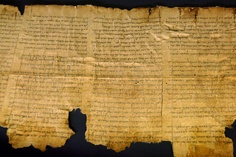It has become fashionable to suggest that the Bible is “missing” certain gospels. As the suggestion goes, dozens of early Christians wrote factual accounts of Jesus’ life, but early Church leaders suppressed certain writings—many of which are known as Gnostic gospels—in order to manipulate the Jesus story in service of their political agenda. Though it may sound plausible at first, this scenario badly distorts the truth. Knowing a few facts about the “missing” writings can help believers counter this claim.
 First, there were not as many “missing gospels” as some suggest. For example, the popular novel The Da Vinci Code claims there were “more than eighty” gospels considered for the New Testament. In reality, we know of about 15-20 that didn’t make it into the New Testament, though manuscripts survived for only some 13. When it comes to Gnostic gospels in particular, the number becomes even smaller. The most famous discovery of Gnostic writings occurred in 1945 at Nag Hammadi in the desert of Egypt. Of the 45 writings unearthed only five were gospels.
First, there were not as many “missing gospels” as some suggest. For example, the popular novel The Da Vinci Code claims there were “more than eighty” gospels considered for the New Testament. In reality, we know of about 15-20 that didn’t make it into the New Testament, though manuscripts survived for only some 13. When it comes to Gnostic gospels in particular, the number becomes even smaller. The most famous discovery of Gnostic writings occurred in 1945 at Nag Hammadi in the desert of Egypt. Of the 45 writings unearthed only five were gospels.
Second, the alternative writings do not present plausible accounts of Jesus’ life. By the end of the second century, very few Christians would allow any gospels to be read in their churches other than Matthew, Mark, Luke, and John. That’s because the competitors to the biblical accounts were considered unreliable. Their content ranged from legendary stories of Jesus’ youth to supplementary historical material to some material that was simply wacky. The Gospel of Philip, for example, says, “Those who receive the name of the Father, the Son, and Holy Spirit . . . [are] no longer a Christian, but [are] Christ.” The Gospel of Mary contains a supposedly secret conversation between Jesus and Mary Magdalene in which Jesus revealed secret truths to which His 12 disciples were not privy.
Then there’s the cosmology presented by Valentinus, the best-known Gnostic—though it represented a theology common to multiple Gnostic gospels. He described a hierarchy of spiritual beings called “aeons.” A low-ranking aeon, Sophia, supposedly fell and gave birth to the Demiurge, the God of the Old Testament. The evil Demiurge created the visible world, which is evil. Christ was an aeon who took possession of the human Jesus and came to free men and women from the prison of their material bodies—but only those men and women with a special divine spark within. Ordinary people could only attain the Demiurge’s middle realm.
As you can see, these are hardly well-documented, alternative accounts of Jesus’ life. As reliable history, the alternative gospels don’t compare to Matthew, Mark, Luke, and John.
Regarding the Gnostic texts specifically, the Gnostics and early orthodox Christians viewed themselves as competitors with mutually exclusive beliefs and accounts of Jesus. Gnostics believed that salvation came through access to mysterious, exclusive teaching given only to a few spiritual Christians. Among the content of this insider teaching was that the physical world was evil while the world of ideas was pure, Jesus was not truly God, and the true Savior did not die on a cross. In the second and third centuries, no one suggested that a more accurate picture of Jesus would emerge by accepting both Gnostic and traditional accounts then combining the best of both into a coherent belief system. Everyone knew this wasn’t possible because the Gnostic gospels contradicted the well-documented, canonical Gospels. Today’s advocates of the “missing books” seem unwilling to appreciate this fact, arguing that open-minded people should accept both the traditional and Gnostic writings.
Finally, most non-canonical gospels were not eyewitness accounts and were written later than Matthew, Mark, Luke, and John. The canonical Gospels are filled with names of specific people and places from the first century that only a first-century eyewitness could have known. Such details are largely absent from the alternative accounts, most of which date to at least the second or third centuries, generations after the founding of the Christian faith. The Gospels of Judas and Mary, for example, are second-century works. When early Christians argued against the alternative gospels, they pressed this point.
So don’t be intimidated by claims of secret, missing gospels. They’re really not secret or missing. They’ve been around for a long time and have been found wanting for good reason.
I have read the Gnostic Gospels and there is a obvious difference between the “Gospel of Thomas” and the rest of the texts. Most scholars agree that the Gospel of Thomas, though found with Gnostic texts is not Gnostic in origin. The Gospel of Thomas never claims Jesus didn’t die on cross or rose again, it just doesn’t mention it. Jesus, like in the New Testament alludes to, “the kindom of Heaven is inside you, and outside you. When you come to know yourself you will see that it is You who are the children of the living Father.” Jesus says this in Luke, “the Kingdom is inside you” and in Mark, “Men will come and do my works and greater..” Jesus said, “I am the Way, the Truth, the Light” meaning do not worship me!! Be me, because you are like me, made in the image of God, like me.
If anyone is interested in Reforming the irrelevant state of modern Christianity, join me.
-AVOY
http://anotherversionofyou.blogspot.com/
if we could only talk to the guy who wrote the gospels
They tell me the old testament is full of pornograpy is that right?